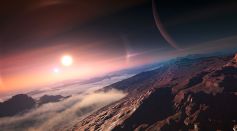Tags: Kepler Space Telescope

Astronomers Found Two Possible Water Worlds Orbiting a Red Dwarf Star 218 Light-Years Away

Astronomers Find Jupiter’s Identical Twin Exoplanet 17,000 Light-Years Away Using Kepler Space Telescope

Three Exoplanets Larger Than Jupiter Confirmed as Stars

New Exomoon Twice the Size of Earth Revolves Around Jupiter-Sized Exoplanet

British Scientists Use AI to Identify New Planets
NASA's Kepler Spacecraft Possibly Found Earth 2.0
Tatooine World Ailen Planet Has Two Stars Detected By NASA's Kepler Telescope Could Be Habitable
Astronomers Discover Planet in Multiple Star System
NASA Researchers Bring Exoplanets to Life in Kepler Style
Alien Earth with Red Sun Discovered Close to Home
Most Popular

Memory and Learning: How the Brain Stores, Retrieves, and Forgets Information

Gut Microbiome 101: How Gut Bacteria Influence Immunity, Mood, and Metabolism

The Strongest Tornadoes Ever Recorded: Scientific Breakdown of Extreme Tornado Events

How Solar Activity Shapes Our Planet: What the Next Solar Maximum Means for Earth





